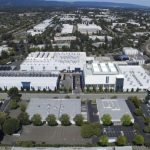Cloud Enables Next-Gen IT Operating Model

Transforming IT operations from traditional infrastructure to cloud computing can deliver notable financial and business benefits. But leading CIOs are using cloud solutions as the pivot point to a new IT operating model. The enterprise cloud market is experiencing rapid growth, and is expected to top $250 billion by 2017, up from $70 billion in 2015.¹ A maturing array of cloud infrastructure, platform, and application services is now available for enterprise adoption, enabling increased utilization, time to market, and a more favorable return on IT investments. These advancements are prompting CIOs to rely more heavily on new, cloud-based delivery models in response to business demands of increased agility, cost transparency, improved service quality, and better risk management. For example, Netflix Inc. recently announced the close of its last data center this summer in a move toward infrastructure that is “fully reliant on Amazon Web Services.”
Yet, notwithstanding the business case for cloud, aggressive adoption by nimble organizations such as Netflix, and forecasted growth for enterprise cloud investment, the journey to the cloud remains much more staggered and deliberate for many organizations. Moving mainstream technology workloads to the cloud frequently entails re-evaluation of long-standing IT infrastructure and organization practices. Medium to large enterprises in particular, need time to properly prepare to integrate, aggregate, and orchestrate cloud and on-premise assets while providing offerings at an attractive price point and easy-to-consume service to internal development teams
Perhaps more significant, contemporary CIOs see their cloud strategies as part and parcel with their efforts to build the capabilities for a next-generation IT operating model. As such, cloud migration calls for careful planning.
The Process
The process begins with examining existing IT capabilities, with first evaluating all IT-supported business functions to assess their compatibility with the cloud by answering three questions:
- Which business functions rely on legacy technology that limits their effectiveness or efficiency, and would benefit from a change to cloud-based systems? These functions are ripe for immediate migration. Typical examples include CRM and human resources.
- Which business systems risk destabilization due to their size and complexity if the IT footprint should be replaced outright? These systems can be migrated to the cloud over time as technology matures, security/audit controls catch up, and internal emotional barriers subside. Typical examples include core financials and processing functions.
- Which systems require as-is operations, at least for the time being, for regulatory compliance purposes? Migration of these systems to the cloud can be deferred. Typical examples include trading systems and health care information systems containing personally identifiable patient information.
Subsequent evaluation of existing IT infrastructure for its compatibility with cloud models is a must. IT organizations must determine which legacy systems can be improved through the use of cloud computing, and which systems would benefit from DevOps, Agile, or other modern-day practices that can speed time to market for new applications.
Based on the results, CIOs and their teams can label some IT operations as “brownfields” that will simultaneously support legacy and new systems, and others as “greenfields” that will rely on the cloud exclusively as a way to respond more quickly to pressing business needs.
IT organizations will need to simultaneously create conditions for both with three paths for achieving this goal:
- Create parallel IT organizations to run greenfield and brownfield environments, increasing the footprint of the greenfield operation as legacy systems are retired.
- Operate the two in parallel, as above, but with a much slower transition to greenfield systems, with the understanding that the business requires the brownfield systems in place indefinitely.
- Use a “big bang” approach, switching from brownfield systems to greenfield all at once.
The big bang approach is typically an option for smaller firms that lack a large legacy IT environment, but it can also work for certain larger companies. For example, a global online retailer can pursue this approach because its big IT implementations are of recent vintage, making them easier to switch to the cloud. Larger organizations may opt to pursue a version of the parallel approach.
The typical underpinning platform and transformation requirements to achieve this target state include:
- Foundational release of a new Infrastructure-as-a-Service (IaaS) public or private cloud platform
- Deployment of a self-service portal to provide a consistent experience across customer base
- Adoption of continuous development and continuous integration capabilities (e.g. Agile, DevOps)
- Shift to a cloud-optimized application portfolio, providing flexibility to outsource applications and infrastructure as appropriate, conduct environment cloning for test and development activities.
In situations where an organization may own the underlying data center real estate, the cloud option still exists and can decrease the cost of a migration, since the data center asset can sold via a sale-leaseback transaction.
This can provide excess capital from the sale of the asset and still allow the company to operate the data center just as it always has. “Larger corporations have started to use this strategy to transition away from the traditional model of owning its data center, while also addressing the issue of stranded capacity from over built facilities and/or the on going capital expenditures needed to support the operations”, noted Stephen Bollier of Five 9s Digital.
Many options exist when considering how best to execute a migration and the impact it will have to a company’s operating model. With these options come greater efficiencies and potential significant long-term cost savings.
- Jagdish Rebelo, “Enterprise Cloud Computing: Future Market Size, Growth and Competitive Landscape.” IHS Quarterly, Q2 2014



